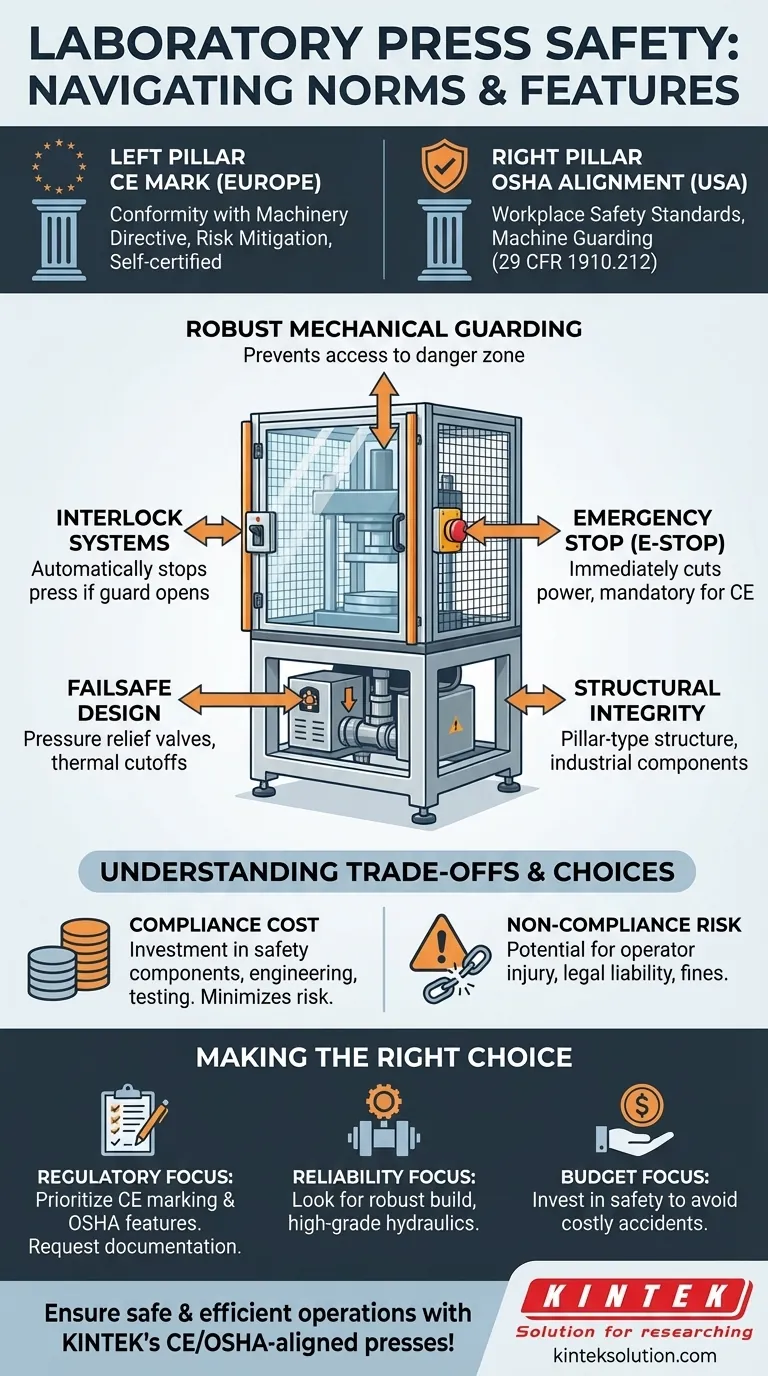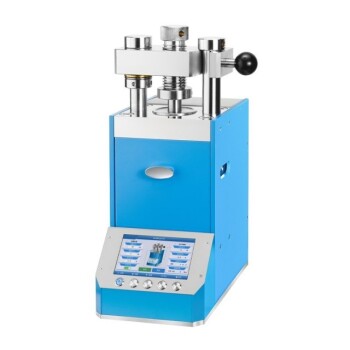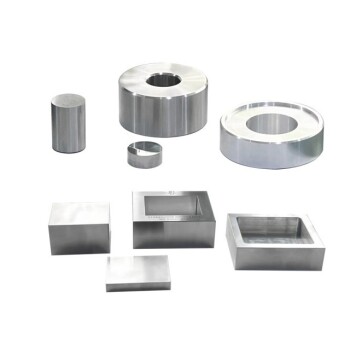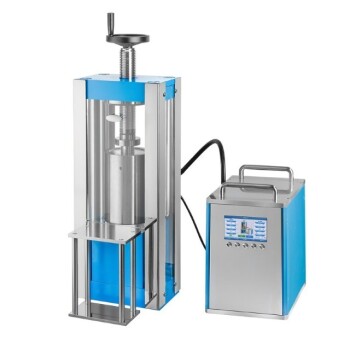The primary safety norms followed during the manufacturing of laboratory presses are compliance with CE marking requirements for the European market and adherence to design principles that align with OSHA standards for workplace safety in the United States. These international standards mandate a comprehensive approach to machine safety, covering everything from electrical systems to physical guarding.
While specific standards like CE and OSHA provide the framework, the core principle is a design philosophy centered on hazard mitigation. This means a safe press is not just certified, but is fundamentally engineered to protect the operator from harm at every stage of its use.
What Do These Safety Standards Actually Mean?
Compliance is more than a sticker on a machine; it represents a manufacturer's commitment to verifiable safety protocols. Understanding what these standards entail is key to assessing the true safety of a press.
The CE Mark: A Declaration of Conformity
The CE mark (Conformité Européenne) indicates that a product sold within the European Economic Area (EEA) meets high safety, health, and environmental protection requirements.
For a laboratory press, this involves conforming to the Machinery Directive, which requires manufacturers to identify and mitigate all potential risks associated with their equipment. This is a formal, self-certified process backed by extensive technical documentation.
OSHA Requirements: Protecting the American Worker
The Occupational Safety and Health Administration (OSHA) sets and enforces standards to ensure safe working conditions in the United States. OSHA does not certify products like the CE mark does.
Instead, manufacturers design equipment to help employers comply with OSHA regulations, such as the standard for machine guarding (29 CFR 1910.212), which requires preventing operators from having any part of their body in the machine's danger zone during operation.
How Safety Norms Translate into Physical Features
These standards are not abstract concepts; they dictate the inclusion of specific, tangible safety features built into the machine's design. The quality of these components is foundational to their effectiveness.
Robust Mechanical Guarding
To comply with both CE and OSHA principles, presses must have physical guards. This often includes a safety shield made of polycarbonate or steel mesh that prevents an operator from reaching into the pressing area while the platens are closing.
Interlock Systems
Guards are typically equipped with interlock switches. These switches automatically stop the press if the safety shield is opened during a cycle, providing a critical layer of protection.
Emergency Stop (E-Stop) Mechanisms
A mandatory feature under the CE Machinery Directive is one or more prominent, easily accessible E-stop buttons. When pressed, these immediately cut all power to machine actuators, providing a foolproof way to halt the press in an emergency.
Failsafe Hydraulic and Electrical Design
Safety norms dictate that systems must be designed to fail safely. Hydraulic systems include pressure relief valves to prevent over-pressurization, while heating systems have thermal cutoffs to prevent overheating. Electrical circuits are designed to prevent accidental startup after a power failure.
Structural Integrity and Durability
The use of high-quality components, such as rigid pillar-type structures and industrial-grade hydraulics, is inherently a safety feature. A structurally sound press is less prone to material fatigue or catastrophic failure under load, ensuring predictable and safe operation over its lifespan.
Understanding the Trade-offs
Choosing a laboratory press involves balancing cost, functionality, and safety. Acknowledging the trade-offs is part of making an informed decision.
The Cost of Compliance
Presses built to meet strict CE and OSHA-aligned standards are often more expensive. This cost reflects the significant investment in engineering, high-quality safety components (like certified interlocks), rigorous testing, and detailed documentation.
The Risk of Non-Compliance
Opting for a cheaper, non-compliant press may save money upfront but introduces significant risk. This includes the potential for severe operator injury, legal liability, and costly fines from regulatory bodies like OSHA.
Verifying the Claims
Always ask a manufacturer for their Declaration of Conformity for the CE mark. This legal document is the manufacturer's official statement that the product meets all relevant European directives. For OSHA, ask how the machine's design specifically helps you comply with workplace safety rules.
Making the Right Choice for Your Laboratory
Your choice should be guided by your specific operational and regulatory environment. Use the safety standards as your primary guide to quality and risk mitigation.
- If your primary focus is regulatory compliance and operator safety: Prioritize presses with explicit CE marking and design features that support OSHA standards, and always request the compliance documentation.
- If your primary focus is long-term reliability: Look beyond the certifications to the build quality, such as robust pillar structures and high-grade hydraulic systems, which are foundational to both safety and performance.
- If your primary focus is budget: Acknowledge that the upfront cost of a compliant press is an investment against the far greater potential costs of an accident, downtime, and legal liability.
Ultimately, understanding these safety principles empowers you to look past marketing claims and select a press that is not only effective but fundamentally safe by design.
Summary Table:
| Safety Standard | Key Requirements | Physical Features |
|---|---|---|
| CE Marking | Conformity with Machinery Directive for EEA | Safety shields, interlock systems, E-stop buttons |
| OSHA Standards | Machine guarding compliance (29 CFR 1910.212) | Robust structures, pressure relief valves, thermal cutoffs |
Ensure your laboratory operates safely and efficiently with KINTEK's reliable lab press machines! We specialize in automatic lab presses, isostatic presses, and heated lab presses designed with CE and OSHA compliance to protect your operators and enhance productivity. Don't compromise on safety—contact us today to discuss your specific needs and discover how our solutions can benefit your lab!
Visual Guide

Related Products
- Manual Heated Hydraulic Lab Press with Integrated Hot Plates Hydraulic Press Machine
- Automatic Laboratory Hydraulic Press Lab Pellet Press Machine
- Automatic Heated Hydraulic Press Machine with Hot Plates for Laboratory
- Manual Laboratory Hydraulic Press Lab Pellet Press
- Automatic High Temperature Heated Hydraulic Press Machine with Heated Plates for Lab
People Also Ask
- How does a hydraulic press assist in forming materials? Unlock Precision and Power for Your Lab Needs
- What are the key features of lab presses? Unlock Precision Force and Heat Control for Your Lab
- What factors determine the choice of hydraulic press for a laboratory? Optimize Your Lab's Efficiency and Precision
- How is a heated hydraulic press used in material testing and research? Unlock Precision in Material Analysis
- What makes laboratory presses durable and consistent? Key Design and Control Insights



















